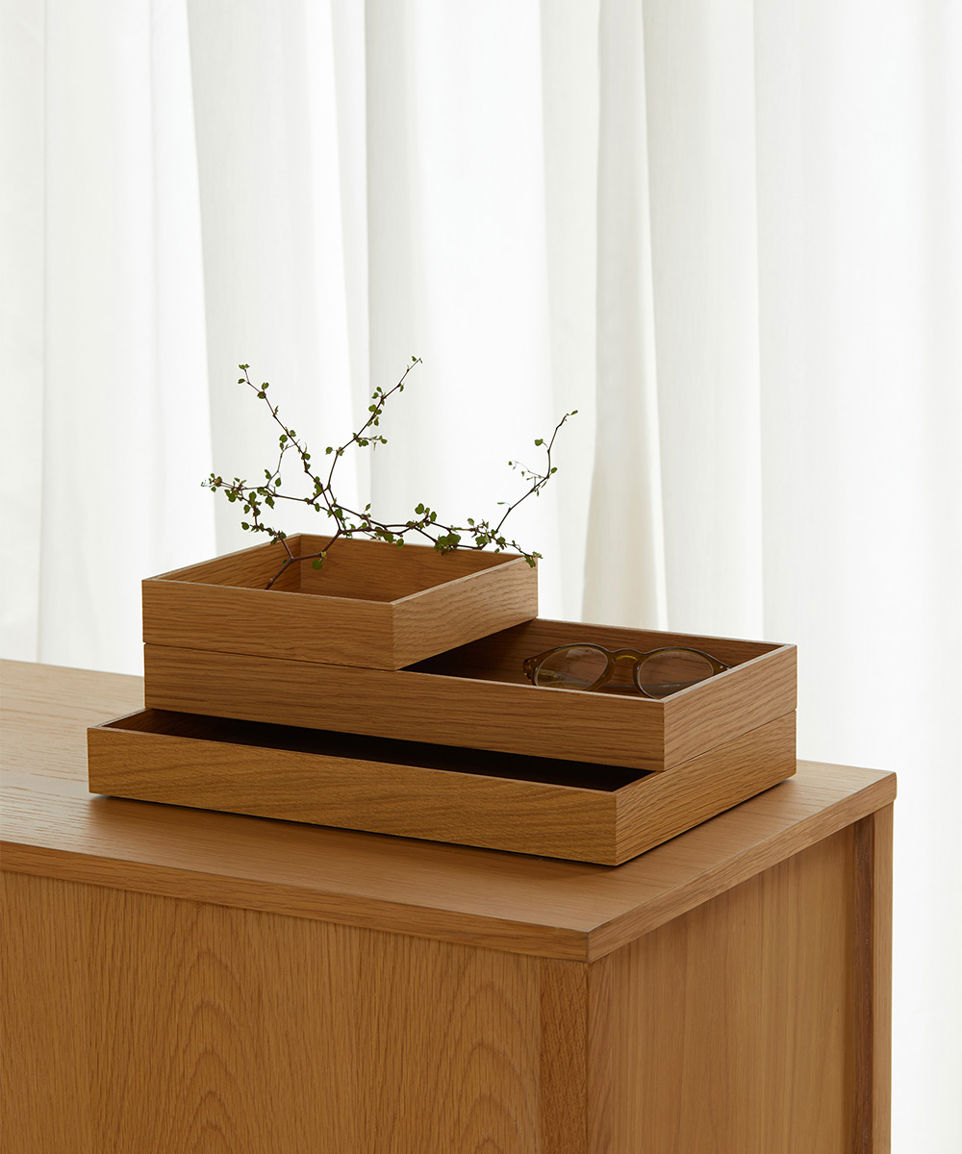




Veneer Wood

We prioritise the use of timber certified by the Forest Stewardship Council (FSC®)
Wood veneer is constructed by glueing thin layers of solid wood (usually thinner than 3mm) onto a core substrate of either plywood or medium-density fibreboard (MDF).
How a timber log is cut determines the grain of the pattern in the veneer. The two main cuts are crown cut and quarter cut.
Crown cut is when the timber is sliced along its length. This creates a crown or “cathedral” appearance that has bold curves and ovals within the grain.
Quarter cut is when the timber is sliced at right angles to the growth rings. This results in a pattern of straight lines in the grain.
Veneer can be more easily shaped than solid wood. It isn't prone to movement, warping, and splitting because the glue and substrate provide strength. This makes it ideal for cupboards and drawers.
Caring for Veneer Wood
Unlike solid wood, veneer can’t be repaired by sanding back and refinishing. It can be susceptible to water damage if moisture gets underneath the surface of the veneer.
Avoid moisture and do not place in damp environments. Wipe away spills immediately. Use placemats or coasters to avoid staining.
Avoid using harsh chemicals or abrasive cleaners to clean the surface. This can strip or damage the coating.
Combat oil build-up on surfaces by wiping down with a soft, microfiber cloth.
Avoid dragging or knocking heavy objects against the surface.
Discover the Difference: Veneer & Solid Wood
Both types of materials and production techniques have been used for centuries. A common misconception is solid wood furniture is of better quality than veneered pieces.
Each material has its advantages and disadvantages—in terms of practicality, functionality, and longevity, as well as appearance. Several factors are considered when choosing to use solid or veneer wood such as how the piece of furniture has been designed and its intended use. Often, a combination of materials works best.
Read about our solid wood features to learn more.
FSC® Certification
In recent times, we have made the shift to using FSC®-certified wood across our furniture pieces. The Forest Stewardship Council (or FSC®) is an international, non-profit organisation that sets standards to ensure forestry is practised in an environmentally responsible and socially beneficial way.
FSC® helps to protect forests from deforestation and therefore the animals and ecosystems within. By using FSC®-certified material, we know the wood in our furniture comes from well-managed forests and originates from sustainable and legal sources. It also ensures the people who work within the entire supply chain are treated fairly and ethically.
American White Oak
American white oak is a medium hardwood with consistent colouring and an attractive grain. It is known for its strength and durability.
At Città, we use both solid oak and oak veneer. Each piece is either finished with a clear, matte PU-lacquer or painted in a solid colour with the natural grain depth visible.
American Walnut
American walnut is a tough hardwood of medium density. It has a fine, open grain that is generally straight, although it can be irregular. Colour can vary—even across the same board—from lighter sapwood to deep chocolate-brown heartwood.
Città furniture uses both solid walnut and walnut veneer. Each piece is either finished with a clear, matte PU-lacquer or painted in a solid colour with the natural grain depth visible.
